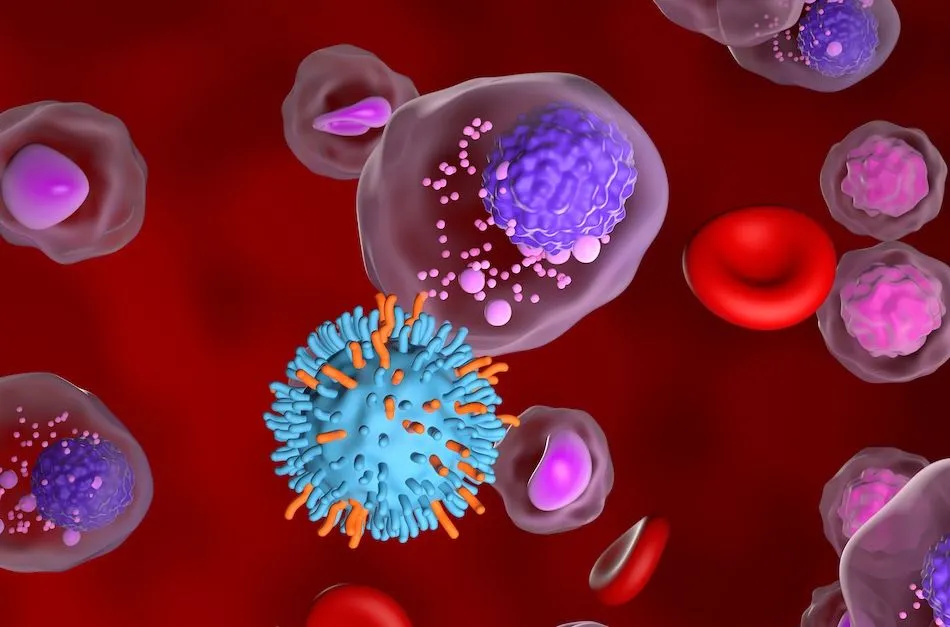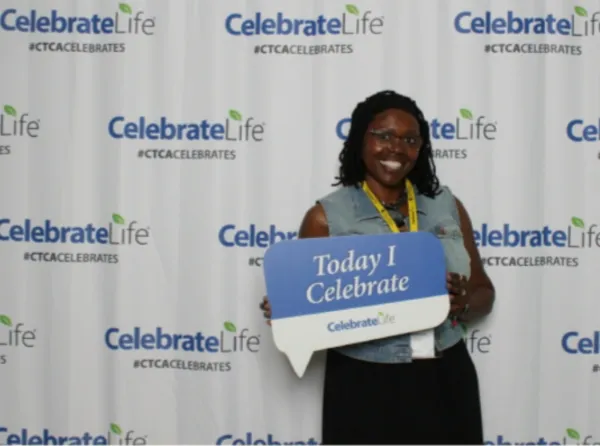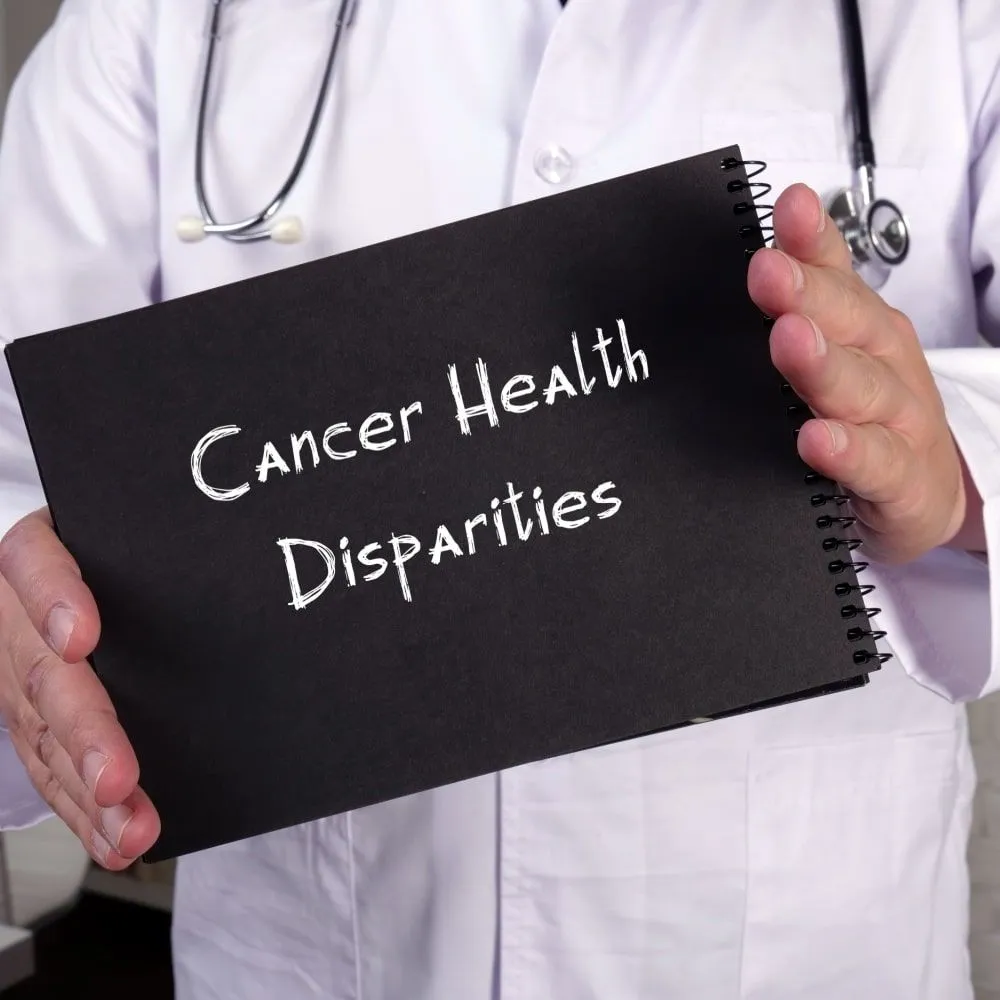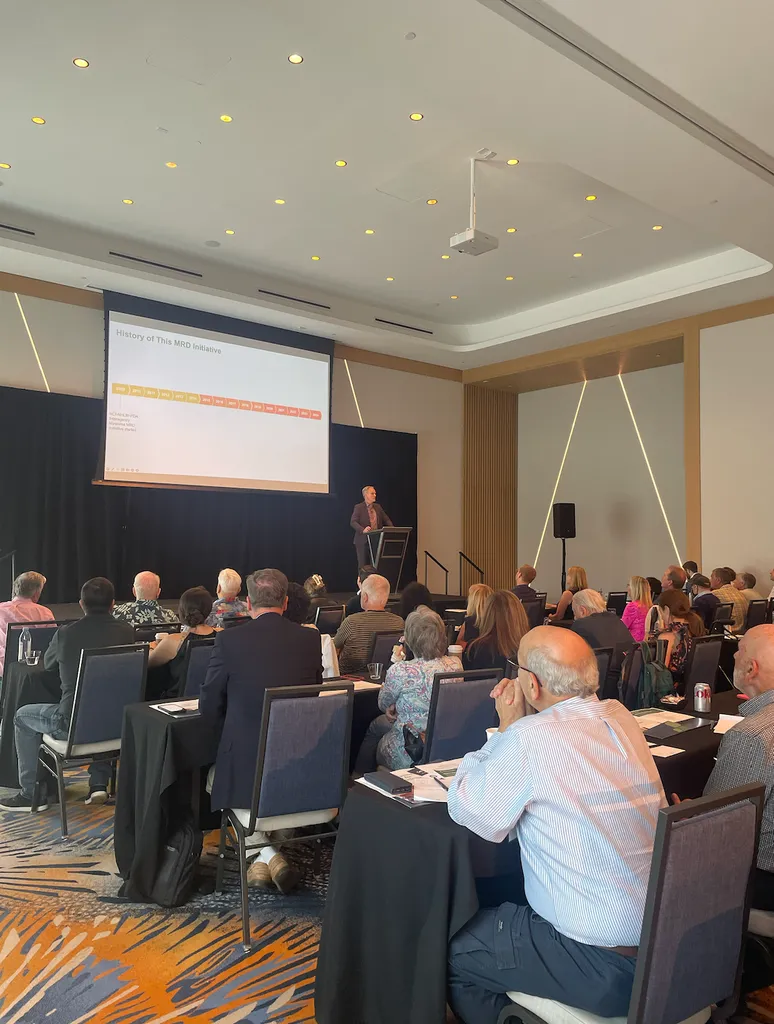Latest Evidence of Bispecific Antibody Therapy in Myeloma

Bispecific antibody therapies represent a breakthrough in the treatment of relapsed/refractory multiple myeloma (RRMM). By simultaneously engaging tumor antigens and T-cells, these therapies have shown remarkable efficacy in patients who have exhausted traditional treatment options.
However, real-world data (RWD) reveal important insights into the long-term safety, efficacy, and practical management of side effects such as cytokine release syndrome (CRS) and immune effector cell-associated neurotoxicity syndrome (ICANS).
Additionally, there is growing interest in optimizing the frequency of bispecific antibody administration to minimize toxicity while maintaining effectiveness.
To learn more about bispecifics, check out our multimedia bispecific antibody education guide, which explains these therapies inside-out for patients and their loved ones.
This article reviews the latest evidence on the real-world application of bispecific antibody therapies, focusing on managing CRS, ICANS, immune system recovery, and the potential for reducing treatment frequency without compromising efficacy.
Cytokine Release Syndrome (CRS) and Immune Effector Cell-Associated Neurotoxicity Syndrome (ICANS)
CRS and ICANS are known risks with bispecific antibody treatments. However, most of the available data are from clinical trials, so it is key to monitor how frequent and severe these side effects are now that bispecifics are commercially available and more widely used.
Managing CRS
According to recent real-world data, CRS is common, with occurrence rates ranging from 40% to 71% in various trials. However, most of these events are mild to moderate in severity (Grade 1 or 2), and severe cases (Grade 3 or higher) are rare.
Tocilizumab (Toci), an IL-6 receptor antagonist, has emerged as an effective treatment for managing CRS.
Early intervention with Toci can prevent the progression of CRS symptoms, allowing patients to continue their bispecific therapy with minimal interruption. In many cases, using Toci has been instrumental in reducing the severity of CRS, also in clinical trials.
In addition, new methods for monitoring CRS have made it possible to treat it more quickly, which lowers the chances of serious complications.
Managing ICANS
Although ICANS is still a risk, it's uncommon in bispecific antibody therapies. By regularly checking for neurological issues and acting quickly if problems occur, the number of complications from ICANS has been reduced. The goal is for patients to continue receiving their treatment without too many interruptions.
Immune Support Post-Infection: IVIG as a Key Therapy
Infection Risks in Relapsed/Refractory Myeloma Patients
Patients with relapsed or refractory myeloma are particularly vulnerable to infections due to both the underlying disease and the immunosuppressive nature of their treatments.
In clinical trials of bispecific antibodies like teclistamab and ABBV-383, infections—often severe—have been observed, with rates of neutropenia, anemia, and thrombocytopenia contributing to immune system challenges.
IVIG as an Immune Booster
Intravenous immunoglobulin (IVIG) has shown promise in helping patients recover from infections. IVIG supports the immune system by providing essential antibodies and reducing the risk of further complications. Real-world data suggest that IVIG can effectively reduce infection recovery times, allowing patients to regain immune function and continue treatment.
IVIG is especially important in patients undergoing bispecific antibody therapies, as these patients are prone to recurrent infections due to prolonged immunosuppression. This approach has proven to be a valuable adjunct in maintaining overall health and reducing treatment-related interruptions.
To learn more, check out the IVIG section of our Bispecific Antibody Guide.
Optimizing Teclistamab Treatment Frequency for Better Outcomes
Balancing Efficacy and Toxicity
Teclistamab has demonstrated high efficacy in myeloma patients, with an overall response rate (ORR) of approximately 60% and deep responses (≥complete response) observed in many cases.
However, the toxicity burden—particularly in the form of CRS, infections, and other side effects—has prompted researchers to explore ways to reduce the frequency of administration without sacrificing efficacy.
Reducing Administration Frequency
Initial trials have begun, testing a reduction in teclistamab administration frequency from weekly to every two weeks for patients who achieve a partial response or better. Emerging data suggest that in patients experiencing high toxicity, reducing the dosing frequency may help alleviate side effects while maintaining durable responses.
Some patients have even been able to switch to less frequent dosing after six months of continued response, with ongoing studies investigating the long-term outcomes of these adjustments.
Learn more about the study here:
While early results are promising, more research is needed to fully understand the efficacy of reduced-frequency dosing. It is crucial to ensure that lowering the treatment burden does not compromise the deep, durable responses that make bispecific antibody therapy so effective.
Continued clinical trials and real-world observations will be key to determining the optimal balance between treatment efficacy and patient quality of life.
Future Directions and Research Needs
Improving Long-Term Safety and Efficacy
Researchers are exploring ways to improve safety and efficacy as bispecific antibody therapies evolve. Combination therapies that enhance antimyeloma activity while minimizing toxicity are one potential avenue for improving outcomes.
Additionally, long-term studies will be crucial in understanding how these therapies perform in patients with high-risk features, such as those with high-risk cytogenetics or refractory myeloma no longer responsive to approved treatments.
Conclusion
The latest real-world data on bispecific antibody therapies in relapsed/refractory multiple myeloma offer promising insights into managing side effects like CRS and ICANS, supporting immune recovery through IVIG, and optimizing treatment frequency for better patient outcomes.
While bispecific antibody therapies already benefit myeloma patients, ongoing research and clinical trials are expected to refine these treatments, making them safer, more effective, and more patient-friendly.
The future of bispecific therapies holds great potential for improving survival and quality of life for those battling multiple myeloma.
Explore the following resources and continue your education on bispecific antibodies:
-
Treating RRMM with Bispecific Antibodies | Rakesh Popat, PhD | EHA 2024
-
Managing the Unique Side Effects of Talquetamamb | Ajai Chari, MD | EHA 2024
Sources:
-
Long-term efficacy and safety results from the Phase 1/2 monumental-1 study of talquetamab
-
Real-World Schedule De-escalation of Teclistamab in Patients with RRMM | Carlyn Tan, MD | EHA 2024
-
MAJESTIC-1 Study -A Subgroup Analysis of High-risk Patients | Luciano Costa, MD | EHA2024
Bispecific antibody therapies represent a breakthrough in the treatment of relapsed/refractory multiple myeloma (RRMM). By simultaneously engaging tumor antigens and T-cells, these therapies have shown remarkable efficacy in patients who have exhausted traditional treatment options.
However, real-world data (RWD) reveal important insights into the long-term safety, efficacy, and practical management of side effects such as cytokine release syndrome (CRS) and immune effector cell-associated neurotoxicity syndrome (ICANS).
Additionally, there is growing interest in optimizing the frequency of bispecific antibody administration to minimize toxicity while maintaining effectiveness.
To learn more about bispecifics, check out our multimedia bispecific antibody education guide, which explains these therapies inside-out for patients and their loved ones.
This article reviews the latest evidence on the real-world application of bispecific antibody therapies, focusing on managing CRS, ICANS, immune system recovery, and the potential for reducing treatment frequency without compromising efficacy.
Cytokine Release Syndrome (CRS) and Immune Effector Cell-Associated Neurotoxicity Syndrome (ICANS)
CRS and ICANS are known risks with bispecific antibody treatments. However, most of the available data are from clinical trials, so it is key to monitor how frequent and severe these side effects are now that bispecifics are commercially available and more widely used.
Managing CRS
According to recent real-world data, CRS is common, with occurrence rates ranging from 40% to 71% in various trials. However, most of these events are mild to moderate in severity (Grade 1 or 2), and severe cases (Grade 3 or higher) are rare.
Tocilizumab (Toci), an IL-6 receptor antagonist, has emerged as an effective treatment for managing CRS.
Early intervention with Toci can prevent the progression of CRS symptoms, allowing patients to continue their bispecific therapy with minimal interruption. In many cases, using Toci has been instrumental in reducing the severity of CRS, also in clinical trials.
In addition, new methods for monitoring CRS have made it possible to treat it more quickly, which lowers the chances of serious complications.
Managing ICANS
Although ICANS is still a risk, it's uncommon in bispecific antibody therapies. By regularly checking for neurological issues and acting quickly if problems occur, the number of complications from ICANS has been reduced. The goal is for patients to continue receiving their treatment without too many interruptions.
Immune Support Post-Infection: IVIG as a Key Therapy
Infection Risks in Relapsed/Refractory Myeloma Patients
Patients with relapsed or refractory myeloma are particularly vulnerable to infections due to both the underlying disease and the immunosuppressive nature of their treatments.
In clinical trials of bispecific antibodies like teclistamab and ABBV-383, infections—often severe—have been observed, with rates of neutropenia, anemia, and thrombocytopenia contributing to immune system challenges.
IVIG as an Immune Booster
Intravenous immunoglobulin (IVIG) has shown promise in helping patients recover from infections. IVIG supports the immune system by providing essential antibodies and reducing the risk of further complications. Real-world data suggest that IVIG can effectively reduce infection recovery times, allowing patients to regain immune function and continue treatment.
IVIG is especially important in patients undergoing bispecific antibody therapies, as these patients are prone to recurrent infections due to prolonged immunosuppression. This approach has proven to be a valuable adjunct in maintaining overall health and reducing treatment-related interruptions.
To learn more, check out the IVIG section of our Bispecific Antibody Guide.
Optimizing Teclistamab Treatment Frequency for Better Outcomes
Balancing Efficacy and Toxicity
Teclistamab has demonstrated high efficacy in myeloma patients, with an overall response rate (ORR) of approximately 60% and deep responses (≥complete response) observed in many cases.
However, the toxicity burden—particularly in the form of CRS, infections, and other side effects—has prompted researchers to explore ways to reduce the frequency of administration without sacrificing efficacy.
Reducing Administration Frequency
Initial trials have begun, testing a reduction in teclistamab administration frequency from weekly to every two weeks for patients who achieve a partial response or better. Emerging data suggest that in patients experiencing high toxicity, reducing the dosing frequency may help alleviate side effects while maintaining durable responses.
Some patients have even been able to switch to less frequent dosing after six months of continued response, with ongoing studies investigating the long-term outcomes of these adjustments.
Learn more about the study here:
While early results are promising, more research is needed to fully understand the efficacy of reduced-frequency dosing. It is crucial to ensure that lowering the treatment burden does not compromise the deep, durable responses that make bispecific antibody therapy so effective.
Continued clinical trials and real-world observations will be key to determining the optimal balance between treatment efficacy and patient quality of life.
Future Directions and Research Needs
Improving Long-Term Safety and Efficacy
Researchers are exploring ways to improve safety and efficacy as bispecific antibody therapies evolve. Combination therapies that enhance antimyeloma activity while minimizing toxicity are one potential avenue for improving outcomes.
Additionally, long-term studies will be crucial in understanding how these therapies perform in patients with high-risk features, such as those with high-risk cytogenetics or refractory myeloma no longer responsive to approved treatments.
Conclusion
The latest real-world data on bispecific antibody therapies in relapsed/refractory multiple myeloma offer promising insights into managing side effects like CRS and ICANS, supporting immune recovery through IVIG, and optimizing treatment frequency for better patient outcomes.
While bispecific antibody therapies already benefit myeloma patients, ongoing research and clinical trials are expected to refine these treatments, making them safer, more effective, and more patient-friendly.
The future of bispecific therapies holds great potential for improving survival and quality of life for those battling multiple myeloma.
Explore the following resources and continue your education on bispecific antibodies:
-
Treating RRMM with Bispecific Antibodies | Rakesh Popat, PhD | EHA 2024
-
Managing the Unique Side Effects of Talquetamamb | Ajai Chari, MD | EHA 2024
Sources:

about the author
Audrey Burton-Bethke
Audrey is a content writer and editor for the HealthTree Foundation. She originally joined the HealthTree Foundation in 2020. Audrey loves spending time with her supportive husband, energetic four-year-old, and new baby.
Trending Articles




Get the Latest Multiple Myeloma Updates, Delivered to You.
By subscribing to the HealthTree newsletter, you'll receive the latest research, treatment updates, and expert insights to help you navigate your health.







